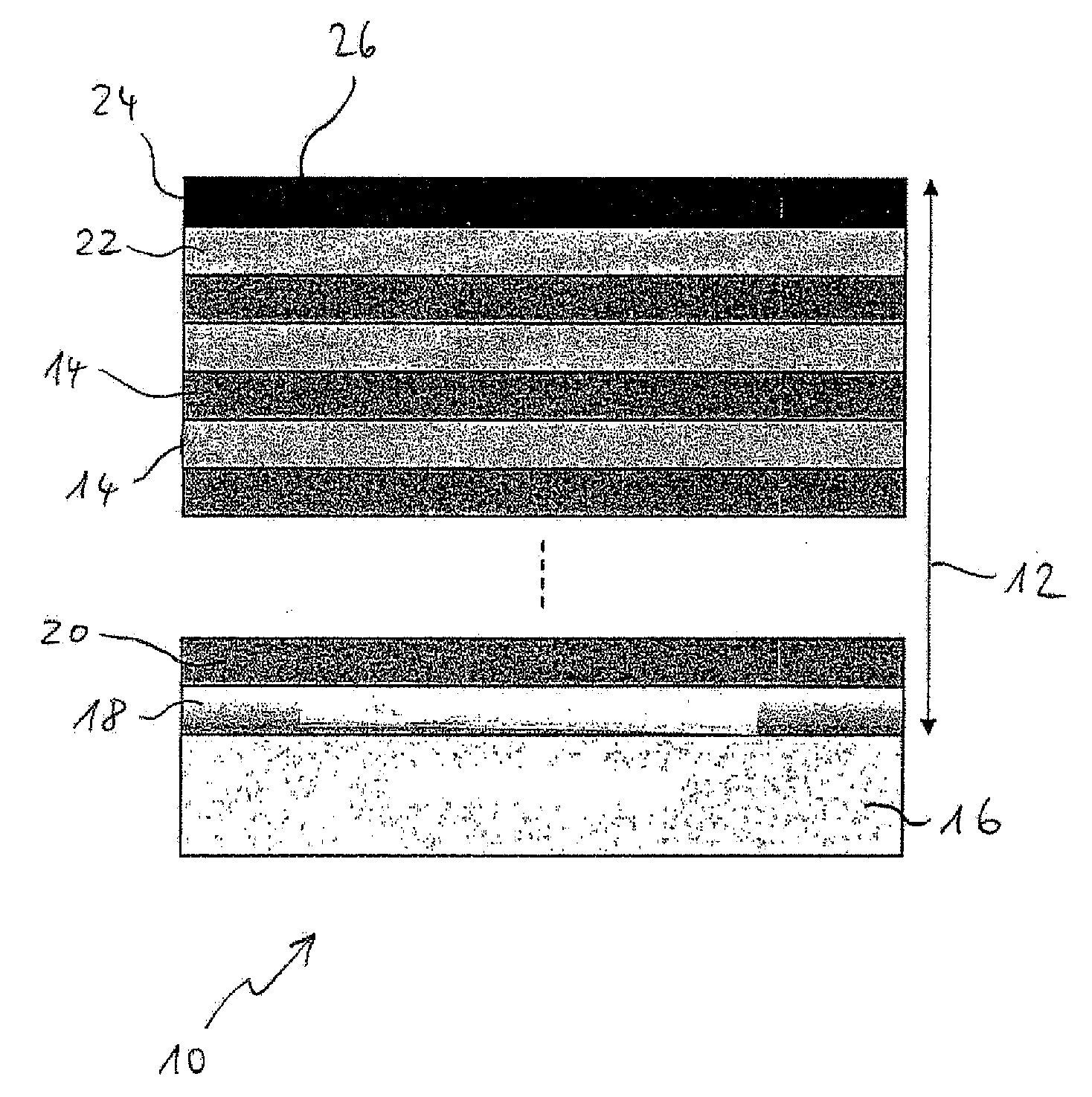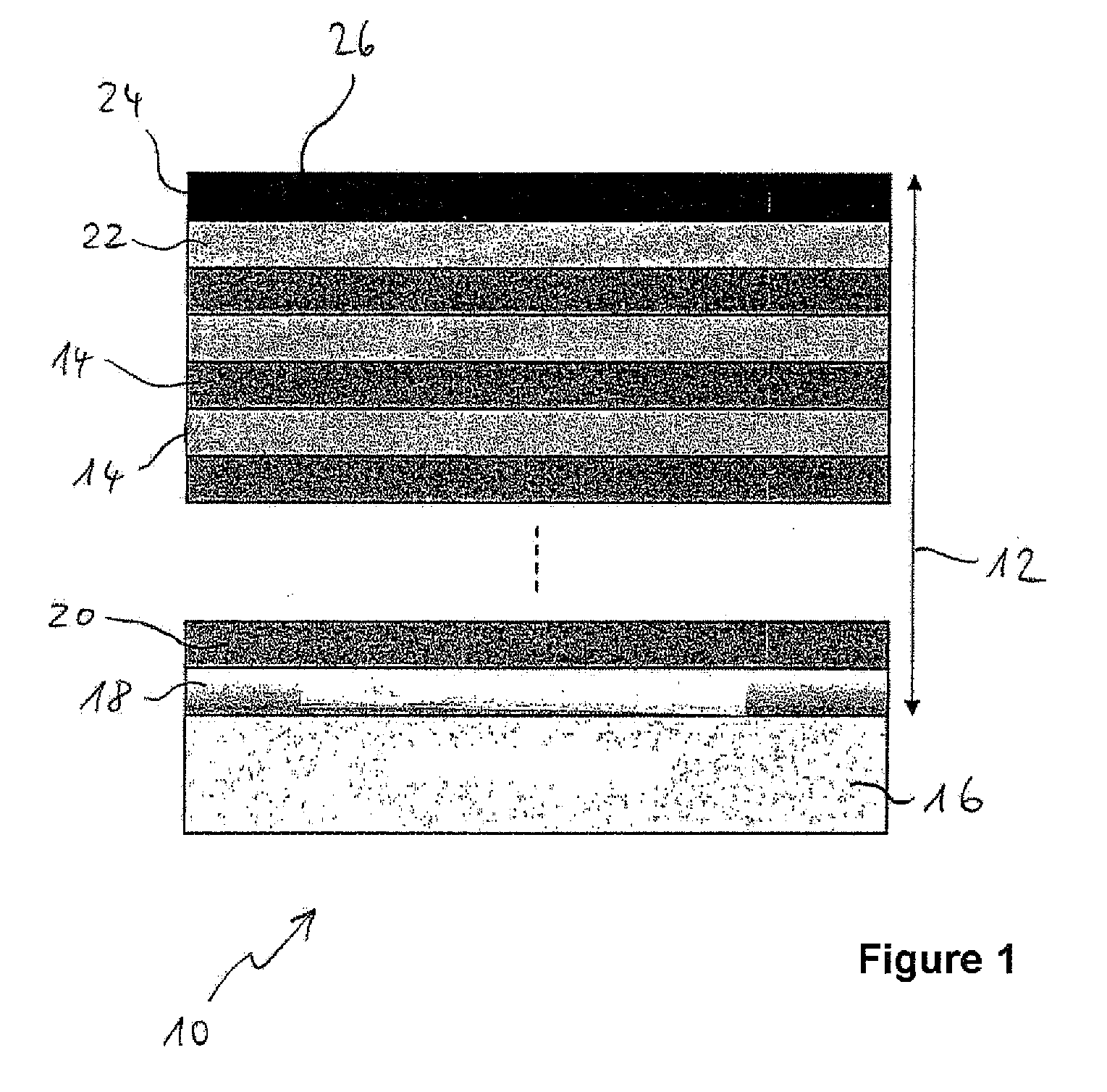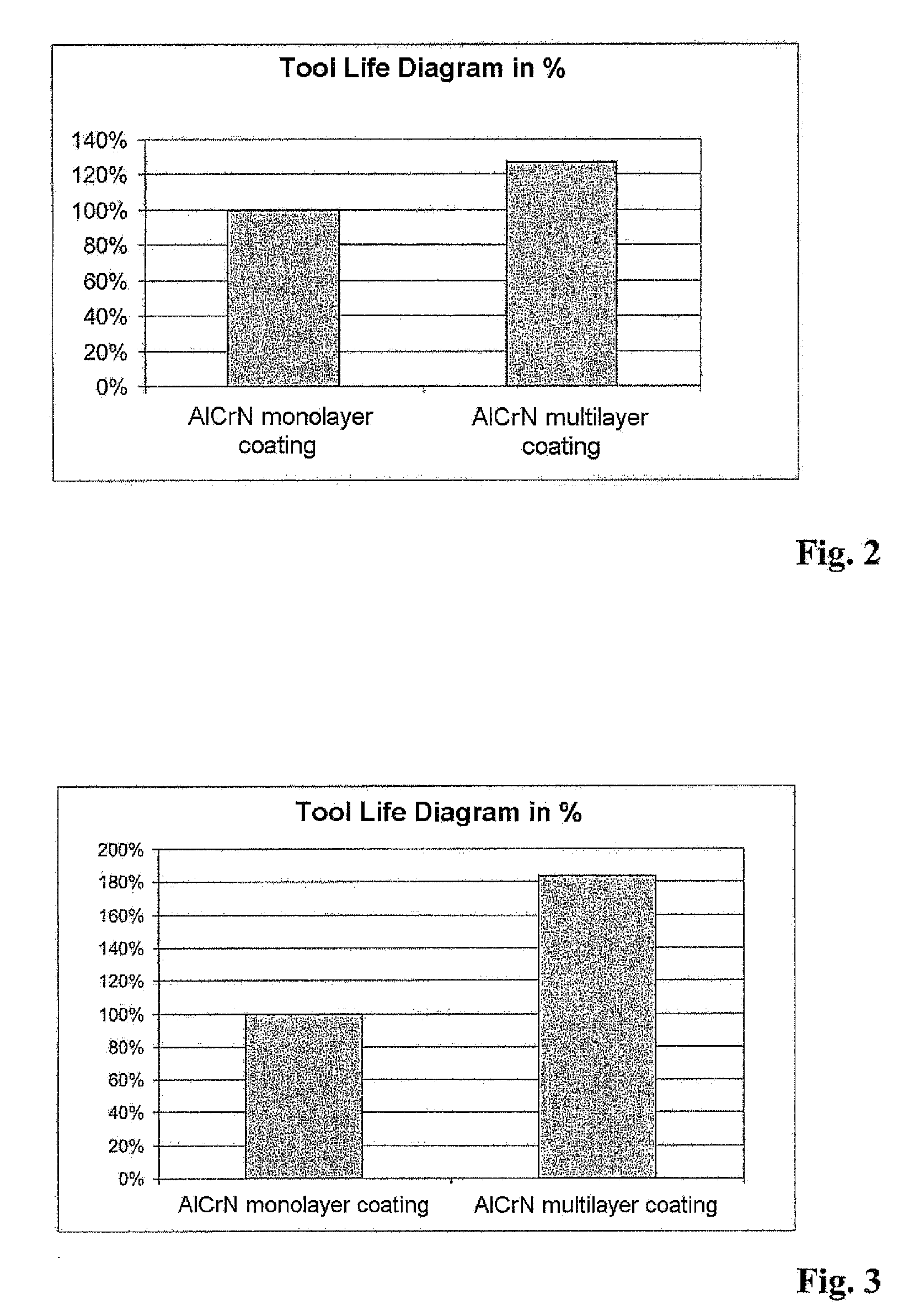Hob cutter with a coating and method for coating hob cutter
- Summary
- Abstract
- Description
- Claims
- Application Information
AI Technical Summary
Benefits of technology
Problems solved by technology
Method used
Image
Examples
Embodiment Construction
[0039]While this invention may be embodied in many different forms, there are described in detail herein a specific preferred embodiment of the invention. This description is an exemplification of the principles of the invention and is not intended to limit the invention to the particular embodiment illustrated
[0040]In FIG. 1, a hob cutter tool 10 according to the invention is represented schematically and in section. The hob cutter tool 10 has a coating 12 composed of a multiplicity of layers 14 arranged on top of each other. First, a bonding layer 18, here a CrN layer 18, is applied onto tool base body 16. The bonding layer 18 improves the adhesion of the remaining layers and at the same time has an impact absorbing effect. A first AlCr nitride layer 20 is applied onto the bonding layer 18. The first AlCr nitride layer is from a first layer type and has a first Al:Cr ratio in the range of 60:40 to 65:35. A second AlCr nitride layer, not represented more closely in FIG. 1, of a sec...
PUM
| Property | Measurement | Unit |
|---|---|---|
| Percent by atom | aaaaa | aaaaa |
| Percent by atom | aaaaa | aaaaa |
| Pressure | aaaaa | aaaaa |
Abstract
Description
Claims
Application Information
 Login to View More
Login to View More - Generate Ideas
- Intellectual Property
- Life Sciences
- Materials
- Tech Scout
- Unparalleled Data Quality
- Higher Quality Content
- 60% Fewer Hallucinations
Browse by: Latest US Patents, China's latest patents, Technical Efficacy Thesaurus, Application Domain, Technology Topic, Popular Technical Reports.
© 2025 PatSnap. All rights reserved.Legal|Privacy policy|Modern Slavery Act Transparency Statement|Sitemap|About US| Contact US: help@patsnap.com



